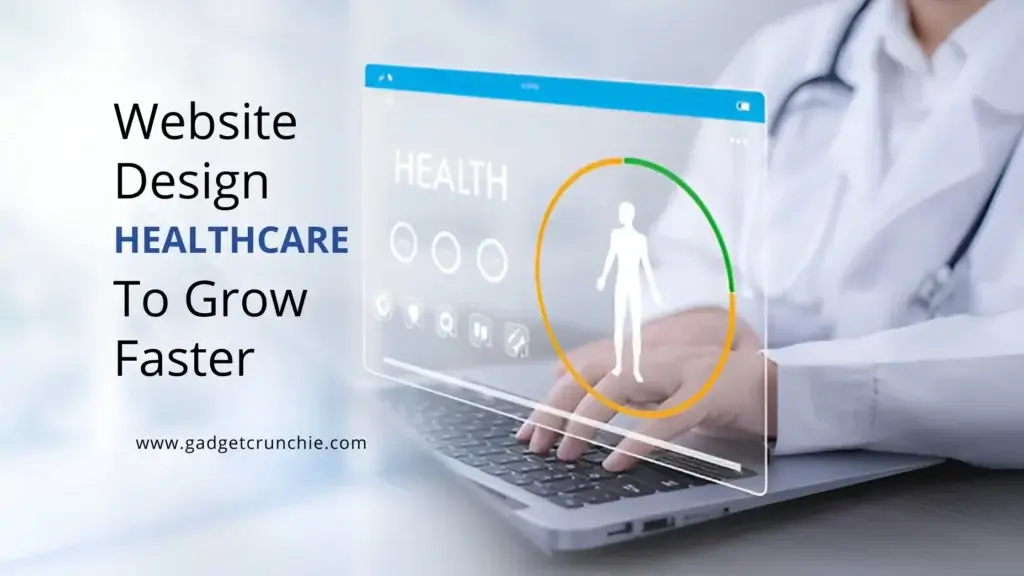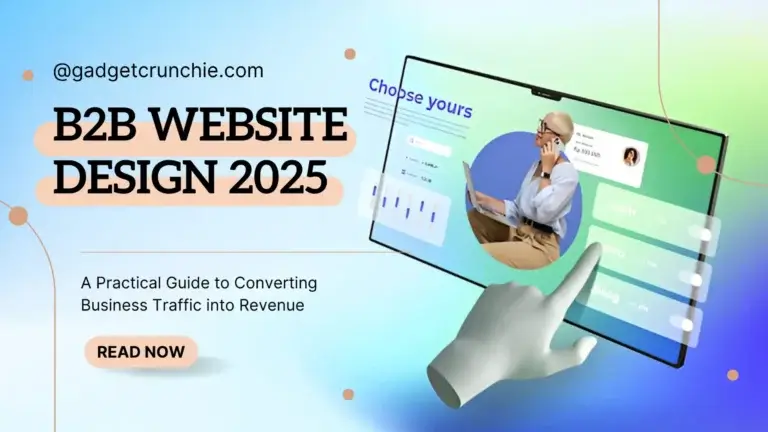Healthcare Website Design 2025: Build Smart, Serve Better

Healthcare in 2025 is not just about patient care—it’s about digital experience. A well-structured healthcare website is now a critical part of delivering timely, secure, and trusted services to patients and medical professionals alike. This blog outlines how healthcare website design in 2025 has evolved, the challenges organizations face, and how to build a better online experience using real examples and trends.
The Problem: Most Healthcare Websites Still Fail the User Test
Despite all the digital innovation in the healthcare space, many hospital and clinic websites continue to:
- Load slowly
- Confuse users with poor navigation
- Lack mobile optimization
- Fail accessibility standards
- Miss secure patient communication tools
According to a 2024 Statista report, more than 63% of users leave healthcare websites within 15 seconds due to confusing structure, outdated information, or poor mobile performance.
That means lost appointments. Lost trust. Lost business.
Agitation: When Poor Web Design Costs Lives and Revenue
Let’s get real.
Imagine a cancer patient looking for urgent contact with an oncologist. They visit a hospital website that:
- Doesn’t show emergency numbers on the homepage
- Has no online appointment option
- Loads slowly and crashes on mobile
Now imagine they leave and book with a competitor, who has a modern, fast, and accessible design.
This is happening every day. Especially in rural or overloaded systems, patients are going where they get answers fastest.
Healthcare providers are already short-staffed. A poorly designed site increases admin load, causes patient frustration, and reduces organizational efficiency.
Solution: Healthcare Website Design in 2025 Must Be Patient-Centered, Mobile-First, and Secure
So, what does a modern healthcare website in 2025 need?
Let’s break it down by core pillars.

1. Clear Navigation with Patient-Centered Architecture
In 2025, the top-level structure of a healthcare site must prioritize:
- Appointments
- Doctors’ directory with specialties
- Emergency contacts
- Telemedicine access
- Billing & insurance info
- COVID or infectious disease alerts (when needed)
🔹 Real example: Mayo Clinic’s website has a clear “Request Appointment” and “Find a Doctor” on the header. It’s fast and efficient.
2. HIPAA-Compliant and Secure Patient Portals
Security and privacy are no longer optional. In 2025:
- All medical websites handling patient data must be HIPAA-compliant (in the U.S.)
- Use end-to-end encryption for messaging and record sharing
- Require two-factor authentication for portals
- Regularly audit for vulnerabilities
🔹 Case Study: In 2024, a mid-size Texas clinic redesigned their portal with a secure single sign-on system. Result? 32% fewer support calls and 17% more online appointments in the first 60 days.
3. Speed Optimization and Mobile-First Design
Data shows that in 2025:
- 72% of healthcare traffic comes from mobile devices
- Google penalizes sites loading slower than 2.5 seconds
Key action points:
- Compress images
- Use modern frameworks like React or Next.js
- Host on fast, healthcare-optimized servers
- Integrate AMP for news and blog articles
- Avoid pop-ups and heavy sliders on mobile
4. Accessibility (ADA/WCAG 2.2 Standards)
Healthcare websites serve the elderly, the disabled, and non-tech-savvy users. Inaccessible websites = legal risk + lost trust.
Include:
- Alt text for images
- Keyboard navigation support
- Readable font sizes (min 16px)
- Screen reader compatibility
- Color contrast compliance
🔹 In 2025, more than 3,000 ADA lawsuits were filed against inaccessible websites—many in the healthcare sector.
If you’re also exploring how professional websites can improve service delivery across industries, don’t miss my post on Tozo A1 Wireless Earbuds
5. Online Booking and Virtual Visit Integration
Modern healthcare users expect:
- Instant appointment booking
- Doctor video call scheduling
- Real-time availability sync with calendars
- Integration with Zoom for Healthcare, Doxy.me, or VSee
🔹 Real data: A multi-location clinic in Florida reported a 41% drop in missed appointments after implementing real-time online booking.
6. Health Education Blog or FAQ Section
People Google their symptoms. If you don’t answer them on your site, someone else will (and maybe mislead them).
Every healthcare website should include:
- An educational blog
- Regular updates on diseases, health tips, and treatment options
- FAQ pages for departments (e.g., Pediatrics, Cardiology)
This also builds SEO traffic and positions your organization as a local authority.
7. SEO Best Practices for Healthcare in 2025
Search Engine Optimization (SEO) isn’t just for tech blogs. In healthcare:
- Add local keywords (e.g., “best dentist in Chicago”)
- Optimize meta titles and descriptions
- Add schema markup for reviews, doctors, locations
- Create location-based landing pages
- Use Google Business Profile for each branch
🔹 Bonus: Claim “Healthcare Provider” under business categories and link it to your appointment system.
8. Real-Time Chat & AI Assistants
AI tools in 2025 can handle:
- Appointment booking
- Billing inquiries
- Doctor availability checks
- Symptom triage (with disclaimers)
Integrate tools like:
- Tidio for HIPAA-compliant chat
- ChatGPT-powered assistants for general help
- Human fallback options
🔹 One clinic in Ontario reduced phone calls by 52% using an AI chatbot integrated with its EMR.
9. Multilingual and Multicultural Support
In a globalized healthcare system:
- Offer multiple language options
- Include diverse imagery and inclusive language
- Cater to cultural expectations in health practices
🔹 In Los Angeles, a healthcare group offering content in Spanish, Korean, and Tagalog saw a 38% increase in new patient bookings from immigrant communities.
10. Analytics, CRM & Marketing Integration
A healthcare website must track:
- Conversion rates from ads
- User behavior (what pages are visited most)
- Bounce rate on mobile
- Patient funnel drop-offs
Integrate:
- Google Analytics 4
- CRM systems like Salesforce Health Cloud
- Email capture forms for newsletters or follow-up reminders
Top Tools for Healthcare Website Design in 2025
| Tool | Use | HIPAA-Ready? |
|---|---|---|
| WordPress + Elementor | Fast site building | Yes (with plugins) |
| Webflow | Clean front-end design | No native HIPAA, needs backend work |
| Wix Healthcare Templates | Easy for small clinics | Limited HIPAA |
| Doxy.me + Zoom Healthcare | Telehealth integration | Yes |
| JotForm HIPAA | Forms & data capture | Yes |
Case Study: From Clunky to Clean – A Real Healthcare Redesign
A behavioral health clinic in New Jersey had a 2009-era website: unresponsive, outdated, and not secure.
In 2024, they:
- Switched to WordPress Kadence + HIPAA plugins
- Integrated Calendly for appointments
- Embedded therapy blogs and mental health resources
- Added SSL + end-to-end form encryption
Results in 6 months:
- 61% increase in bookings
- 45% boost in mobile traffic
- 18% reduction in front desk call volume
Conclusion: Design with Care, Deliver with Confidence
In 2025, a healthcare website is no longer just a digital brochure. It’s a full-service platform for connection, information, and care.
If your website doesn’t load fast, explain clearly, and let patients take action easily — they will go elsewhere.
Start with the basics:
- Fast load times
- Secure patient access
- Clear, local SEO
- Accessible navigation
- Trust-building content
Then grow into AI chat, analytics, multilingual support, and CRM.
If you want to read more information about how to boost traffic on your Website just visit –> The Insider’s Views
Let me know if you want the featured image for this post too!




